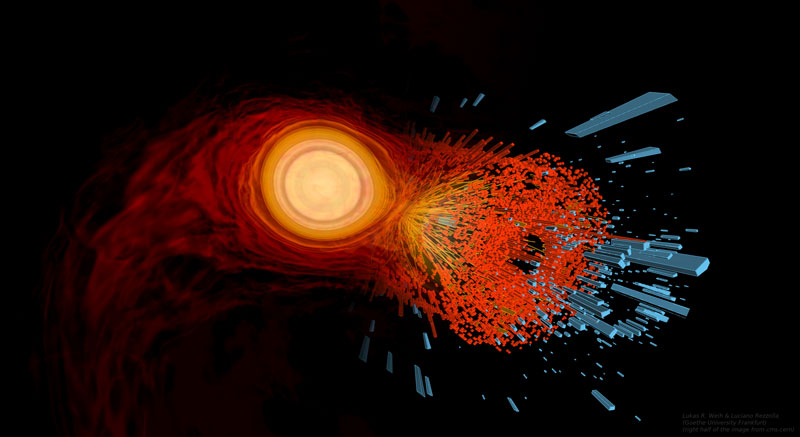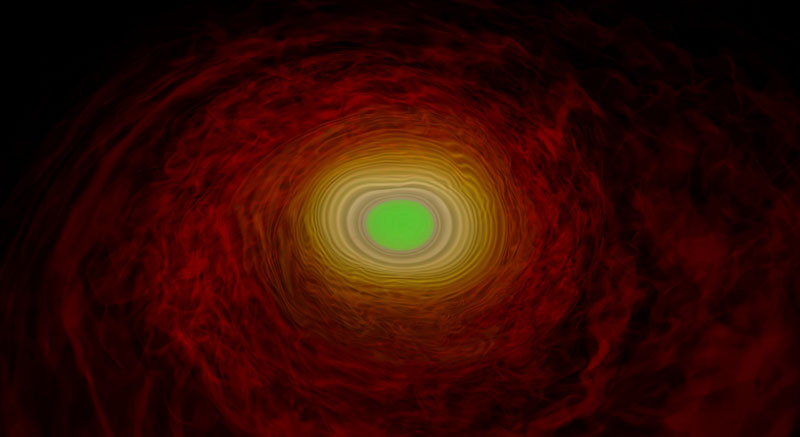
According to modern particle physics, matter produced when neutron stars merge is so dense that it could exist in a state of dissolved elementary particles. This state of matter, called quark-gluon plasma, might produce a specific signature in gravitational waves. Physicists at Goethe University Frankfurt and the Frankfurt Institute for Advanced Studies have now calculated this process using supercomputers. (Physical Review Letters, DOI 10.1103/PhysRevLett.124.171103)
Neutron stars are among the densest objects in the universe. If our Sun, with its radius of 700,000 kilometres were a neutron star, its mass would be condensed into an almost perfect sphere with a radius of around 12 kilometres. When two neutron stars collide and merge into a hyper-massive neutron star, the matter in the core of the new object becomes incredibly hot and dense. According to physical calculations, these conditions could result in hadrons such as neutrons and protons, which are the particles normally found in our daily experience, dissolving into their components of quarks and gluons and thus producing a quark-gluon plasma.
In 2017 it was discovered for the first time that merging neutron stars send out a gravitational wave signal that can be detected on Earth. The signal not only provides information on the nature of gravity, but also on the behaviour of matter under extreme conditions. When these gravitational waves were first discovered in 2017, however, they were not recorded beyond the merging point.
This is where the work of the Frankfurt physicists begins. They simulated merging neutron stars and the product of the merger to explore the conditions under which a transition from hadrons to a quark-gluon plasma would take place and how this would affect the corresponding gravitational wave. The result: in a specific, late phase of the life of the merged object a phase transition to the quark-gluon plasma took place and left a clear and characteristic signature on the gravitational-wave signal.
Professor Luciano Rezzolla from Goethe University is convinced: “Compared to previous simulations, we have discovered a new signature in the gravitational waves that is significantly clearer to detect. If this signature occurs in the gravitational waves that we will receive from future neutron-star mergers, we would have a clear evidence for the creation of quark-gluon plasma in the present universe.”

Video:
Visualisation of merging neutron stars:
This simulation shows the density of the ordinary matter (mostly neutrons) in red-yellow. Shortly after the two stars merge the extremely dense centre turns green, depicting the formation of the quark-gluon plasma .
Publication: Post-merger gravitational wave signatures of phase transitions in binary mergers. Lukas R. Weih, Matthias Hanauske, Luciano Rezzolla, Physical Review Letters Physical Review Letters DOI 10.1103/PhysRevLett.124.171103 https://link.aps.org/doi/10.1103/PhysRevLett.124.171103







